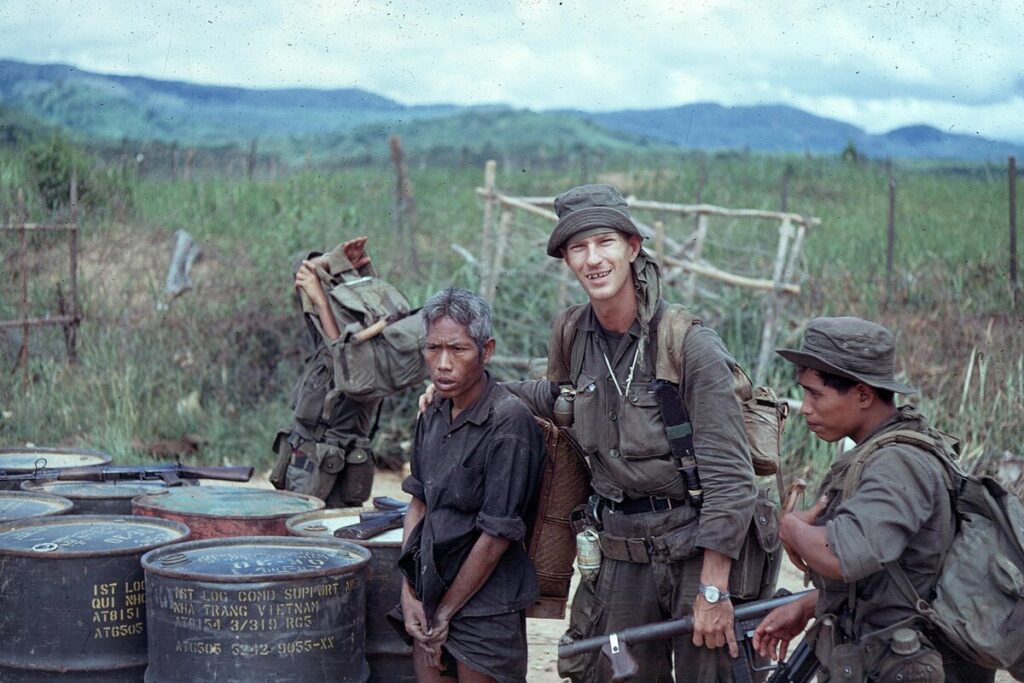When Jerry Shriver left the United States for Vietnam, the only reason he ever came home was because the Army forced him to get some R&R. Even then, Shriver spent his time stateside talking tactics with fellow soldiers and looking for weapons to use in his unconventional, often personal war against the communists of Southeast Asia. He earned the nickname “Mad Dog” from Radio Hanoi for his fierce raids into enemy territory, his ability to fight his way out, and his refusal to use long-barreled weapons, instead preferring a short-range fight.

Jerry Shriver Became a Legend Before Disappearing
It was when the Army believed it had located the communists’ Central Office for South Vietnam – the long-hunted holy grail of enemy targets – inside Cambodia that Shriver met an uncertain fate. His name lives on as a fabled, legendary member of the Army’s Special Forces, but sadly, his remains have never been recovered.
Shriver joined the Army in his late teenage years, first becoming a paratrooper in the 101st Airborne Division and then joining the Army’s elite Special Forces. His first assignment as a special operator was with a Long Range Patrol Company in West Germany, where he was destined to fight the Soviet Union behind enemy lines in the event of World War III. But war with the USSR never came, and after a stint in Taiwan, he was sent to the 5th Special Forces Group in South Vietnam.

He began his first tour in the jungles of Vietnam in 1966 and immediately became known for being a walking arsenal of powerful, but short-barreled weapons, like submachine guns or sawed-off shotguns. He spent a great deal of time leading Montagnards – indigenous, mountain-dwelling people of Southeast Asia – in deep incursions into the “fishhook” areas of Cambodia. Often surrounded, they were experts in either sneaking around undetected or fiercely fighting their way home, even if it meant calling airstrikes on themselves.
Jerry Shriver Struck Fear into His Enemie
As Shriver’s body count began to mount, so did his legend, even among the other members of the Army’s Special Forces. Even the communists took notice, offering a $10,000 bounty on his head (in 1967 dollars). Everything was about killing the enemy while Shriver was in the bush, and sometimes when he wasn’t. When he went home (because the Army demanded it) for a few months’ rest, he mailed back a pistol designed for hunting Grizzly Bears.

The stories about his heroism are many. On a mission inside Cambodia in October 1967, his platoon found itself caught between a lake and a company-sized enemy force that was slowly gaining ground against them. Shriver oversaw an air attack from two Air Force helicopter gunships, firing rockets and miniguns barely 25 meters from his own position. As his force advanced against the enemy, he repeatedly called in more strikes, moving 20 meters at a time.
In November 1968, his four-man patrol mission was outrunning a North Vietnamese battalion. Again coordinating air strikes, he created separation between the two units while a helicopter dropped a rope ladder at their landing zone. Shriver provided cover fire as his squad climbed into the helicopter. When it was his turn, he latched himself to the rope so the helo could take off with him still providing effective fire.
Jerry Shriver Vanished on a Deadly Secret Mission
That’s when the U.S. got the chance to capture the Central Office for South Vietnam, also known as the COSVN, the Northern communists’ central planning and command group for the insurgency and attack on the South, as well as the future government committees. The COSVN was, for the longest time, a mere rumor; a field legend. But it turned out to be not only a real enemy unit, but also a legitimate target, and in 1969, the U.S. knew it was in Cambodia. North Vietnamese weapons, vehicles, and units were all streaming through Cambodia, and Americans were being killed by the score.

President Richard Nixon had decided to bomb targets inside Cambodia’s “fishhook” area in March of 1969. Codenamed “Breakfast,” 60 B-52 Stratofortress bombers took off from Guam to hit the supposed location of the COSVN at Base Area 353 in Cambodia, a site provided by Army reconnaissance patrols. Unbeknownst to most, even in the military community, a team of Special Forces was lifted into the area immediately following the bombing runs. Its mission was to capture NVA survivors and other intelligence. Jerry Shriver was among the operators on this team.
Despite the bombing, the North Vietnamese defenses were still incredibly deadly. Although the helicopters were able to insert their troops through the enemy’s “veil of lead,” escape was much more difficult. Shriver, after helping some wounded men to an evacuation helicopter, was last seen running to help his troops withdraw after being pinned down. His remains have never been found, and although he was listed as missing in April 1969, he was officially listed with a ‘Presumptive Finding of Death’ in June 1974. His decorations include two Silver Stars, a Soldier’s Medal, an Air Medal, seven Bronze Stars, and a Purple Heart.
Read About Other Profiles in Courage
If you enjoyed learning about MSG Jerry M. Shriver, we invite you to read about other profiles in courage on our blog. You will also find military book reviews, veterans’ service reflections, famous military units and more on the TogetherWeServed.com blog. If you are a veteran, find your military buddies, view historic boot camp photos, build a printable military service plaque, and more on TogetherWeServed.com today.

0 Comments